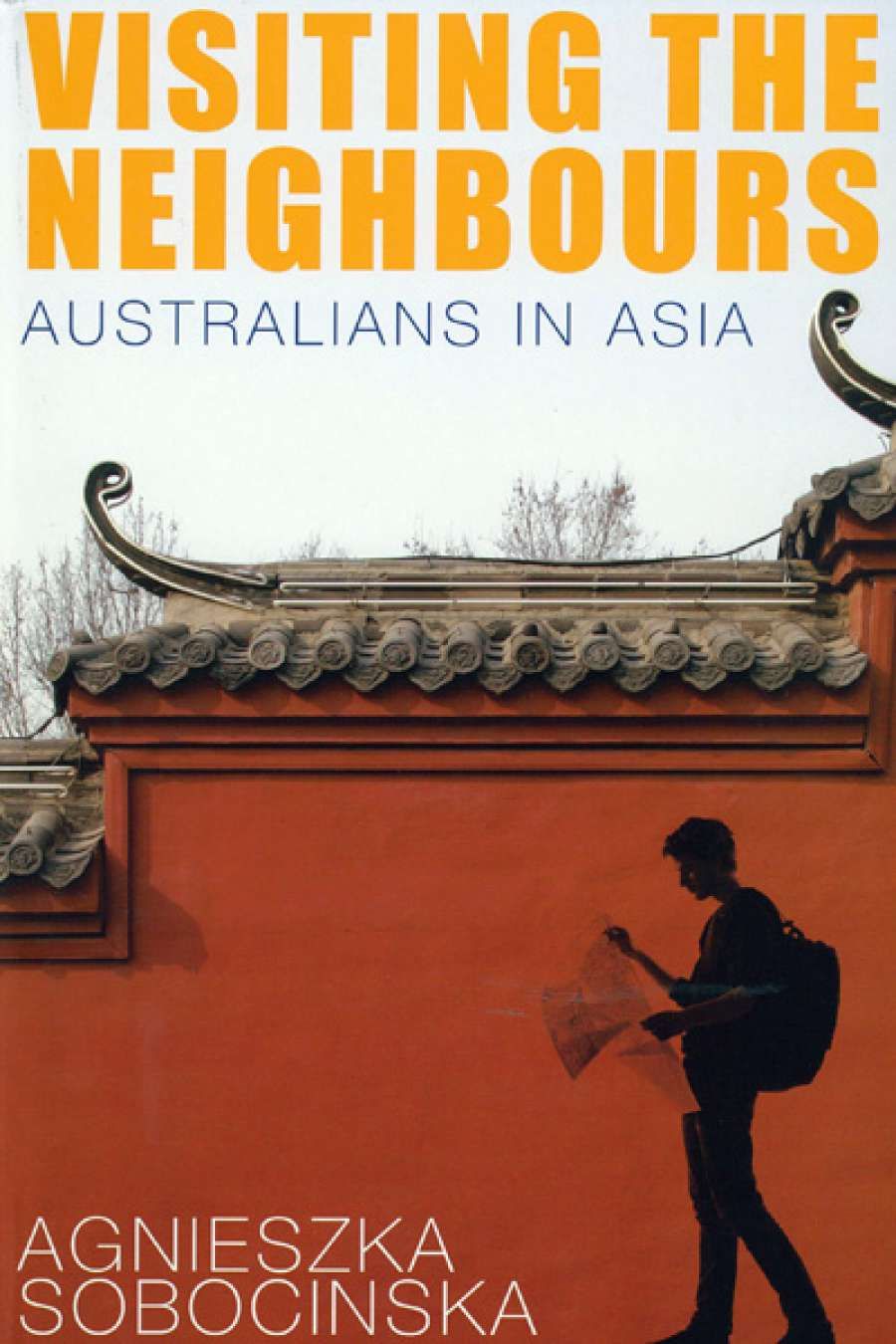
- Free Article: No
- Contents Category: Australian History
- Custom Article Title: Stephen Atkinson reviews 'Visiting the Neighbours: Australians in Asia' by Agnieszka Sobocinska
- Review Article: Yes
- Online Only: No
- Custom Highlight Text:
It was timely that halfway through reading this book, I glanced up to see Clive Palmer on Q&A vowing to stand up to ‘the Chinese mongrels’. It was as if a columnist from the Bulletin circa 1895 had risen from the grave to thump a battered tub and warn us about the monster intent on destroying ‘our Australian way of life’. Images like these still lurk in the bedrock of White Australian consciousness, and Palmer’s outburst was a reminder of how readily they can be summoned.
- Book 1 Title: Visiting the Neighbours
- Book 1 Subtitle: Australians in Asia
- Book 1 Biblio: NewSouth, $34.99 pb, 264 pp
Despite these parallels and the persistence of old fears and attitudes, it would be wrong to suggest that popular attitudes have always been so clear-cut or that nothing has changed. One of Sobocinska’s aims is to show not just how far we have come, but to indicate how varied, and occasionally enlightened, Australian responses to Asia have been in the past, and to venture that travellers have always been at the forefront of this.
This is, in a sense, a people’s history. While not wholly disconnected from the pronouncements of those in power, or from the influence of bestselling travel writers like Frank Clune and Colin Simpson, whose opinions tended to echo the official line, Sobocinska shows that Australian travellers through the region were not unquestioning of them either. Some rejected the orthodoxies and mainstream assumptions of the time, especially those encapsulated in the White Australia policy. Others arrived at conclusions from eccentric angles or drew from the perspective of their own experiences in the region, especially during war and its aftermath.
 Agnieszka Sobocinska (photograph by Gary Lacey)
Agnieszka Sobocinska (photograph by Gary Lacey)
From the start, Sobocinska interrogates the two key concepts contained in the title, both of which buckle with the gentlest of probing. What we mean when we speak of ‘Australians’ is clearly contested territory, or should be, while the imperial and geographical construct ‘Asia’ conveniently glosses over the incommensurability of the continent’s cultural, linguistic, historical, and political diversity. Even if we accept that in Australia, Asia is usually taken to refer to the countries to our north, the history of Australian engagement with Indonesia, Vietnam, China, and Japan – four nations that feature prominently – has been significantly different owing to matters such as proximity, war, and the spectres of communism and militant Islam. Yet, despite raising concerns about the usefulness of these conceits, the author is forced to some extent to continue with them at risk of repeating the same generalities she seeks to complicate.
Given the sheer volume of information and the range of sources, mapping a coherent pathway was always going to prove a challenge. At first I was sympathetic to the rejection of a country-by-country or a strictly chronological approach, but the decision to shoehorn material into sections dedicated to categories of travellers – ‘warriors’, ‘fortune hunters’, ‘seekers’, ‘tourists’ and so on – produced its own limitations; cul-de-sacs in which travellers’ tales ended too soon or had their conclusions postponed to sections yet to come. Loose ends in an endeavour like this are inevitable, even welcome, but a stronger narrative thread or thesis would have helped propel it forward.
There is, nevertheless, much to commend about this book. Judging from the cover image of a backpacker consulting his map against a backdrop of identifiably ‘Asian’ architecture, I wondered whether this might be a companion piece, or counterpoint, to the sorts of warts-and-all images of Australians in Asia presented on What Really Happens in Bali, and it does offer a back-story to how a show like that came to be on our screens in the first place. Thorough research has unearthed rich material and vignettes that leave a lasting impression. These are especially compelling when they reveal the confusion of responses Australians have had in their encounters with Asia. A number are also worthy of deeper and more detailed consideration than they have been given here. That Alfred Deakin, an architect of the Immigration Restriction Act, was a student of Buddhism and Eastern mysticism, for example, suggests complexities and ambiguities that might have been used to frame the whole discussion. Similarly, the personal epiphanies experienced by ordinary Australians when confronted with people and places that did not fit the stereotypes could have been more closely juxtaposed with the stories of those who travelled through Asia and saw only what they expected to see.
A more nuanced and fine-grained account of the history of ordinary Australians’ engagement with Asia has been long overdue and this is certainly, at the very least, a stride in the right direction. We can only hope it finds its way to Clive Palmer’s desk soon.


Comments powered by CComment